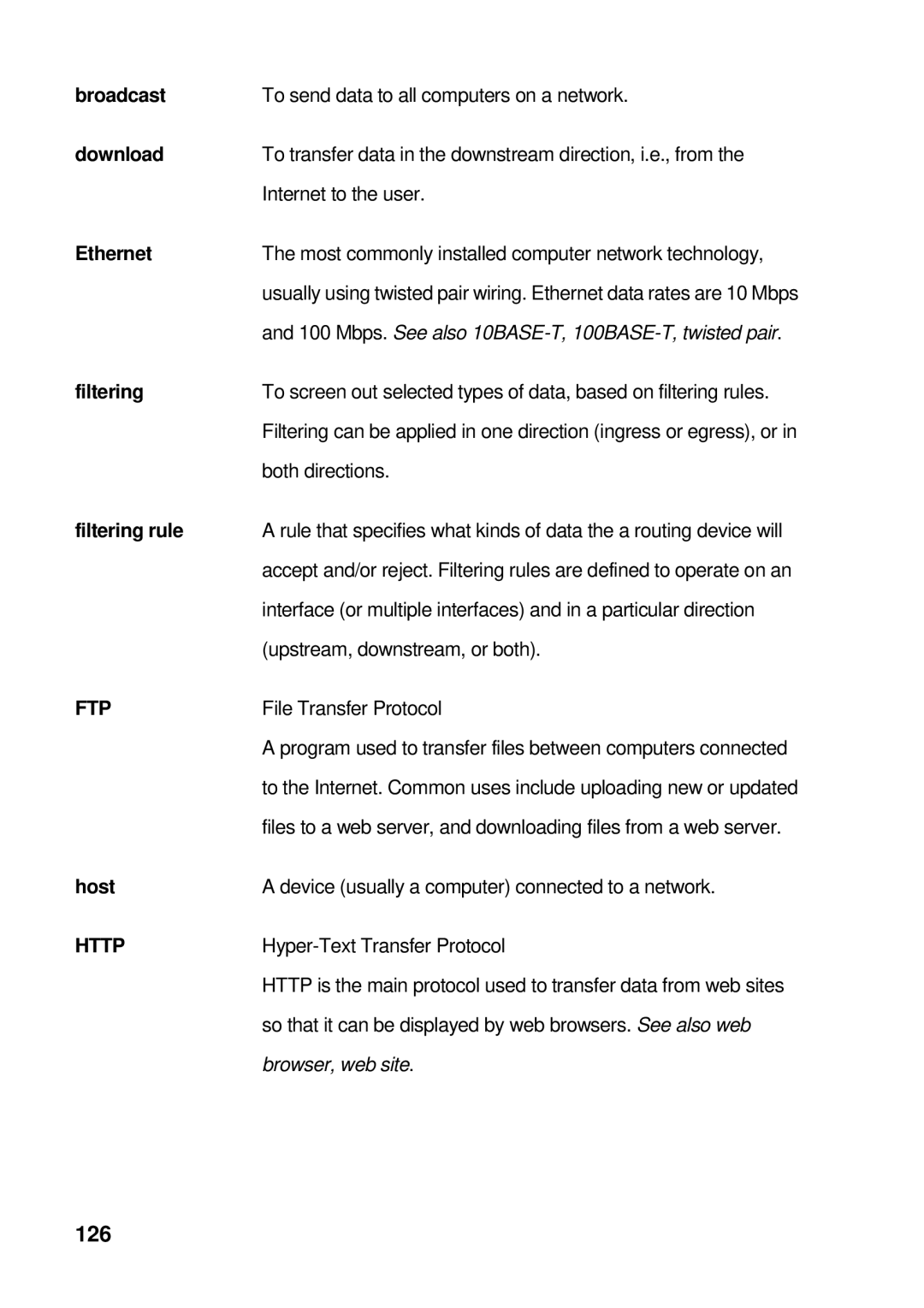broadcast | To send data to all computers on a network. |
download | To transfer data in the downstream direction, i.e., from the |
| Internet to the user. |
Ethernet | The most commonly installed computer network technology, |
| usually using twisted pair wiring. Ethernet data rates are 10 Mbps |
| and 100 Mbps. See also |
filtering | To screen out selected types of data, based on filtering rules. |
| Filtering can be applied in one direction (ingress or egress), or in |
| both directions. |
filtering rule | A rule that specifies what kinds of data the a routing device will |
| accept and/or reject. Filtering rules are defined to operate on an |
| interface (or multiple interfaces) and in a particular direction |
| (upstream, downstream, or both). |
FTP | File Transfer Protocol |
| A program used to transfer files between computers connected |
| to the Internet. Common uses include uploading new or updated |
| files to a web server, and downloading files from a web server. |
host | A device (usually a computer) connected to a network. |
HTTP | |
| HTTP is the main protocol used to transfer data from web sites |
| so that it can be displayed by web browsers. See also web |
| browser, web site. |
Page 126
Image 126
